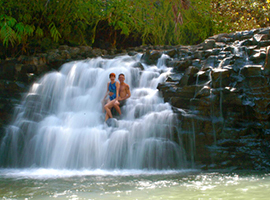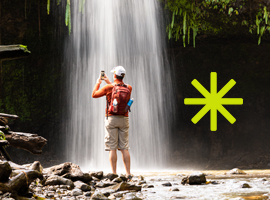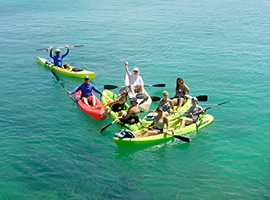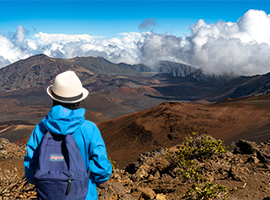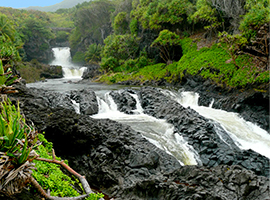If you’re planning a trip to Maui between November 2025 and April 2026, you’re arriving during one of the most breathtaking natural events on Earth: whale watching season. Each winter, North Pacific humpback whales (Megaptera novaeangliae), Koholā in Hawaiian, travel thousands of miles from Alaska to breed, calve, and nurse in Hawai‘i’s warm, shallow waters—and Maui is the best seat in the house.
Here at Hike Maui, we’re not just hiking guides—we’re naturalists passionate about all of Maui’s ecosystems, from summit to sea. This guide offers everything you need to know to have a meaningful, awe-inspiring whale watching experience during your stay.
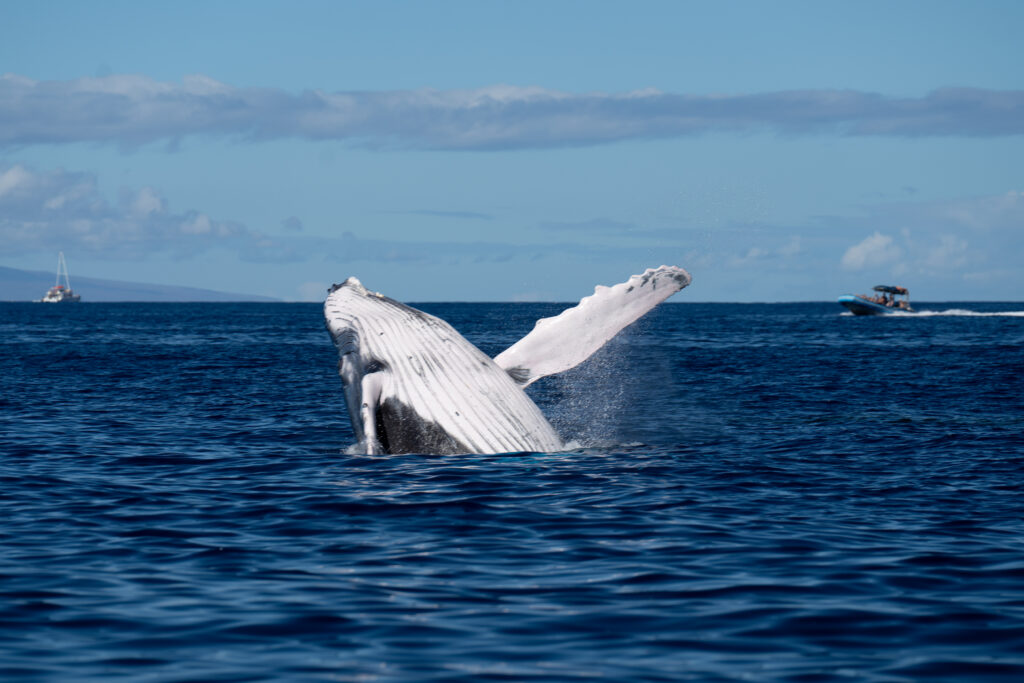
📅 When Is Whale Watching Season in Maui?
The official whale season is from December 15 to May 15, established by the Hawaiian Islands Humpback Whale National Marine Sanctuary. This federally protected zone covers over 1,400 square miles of Hawaiian waters and exists specifically to protect humpback whales and their habitat.
During this season:
- Jet skis and other thrill craft are restricted in sanctuary waters.
- Whale activity is most visible between January and March.
- You can see:
- Breaching whales
- Tail slaps and spy hops
- Newborn calves traveling alongside mothers (stunning!)
- Competition pods—synchronized groups of males vying to be next year’s dad—are a thrilling part of the courtship process, which lasts throughout the season.
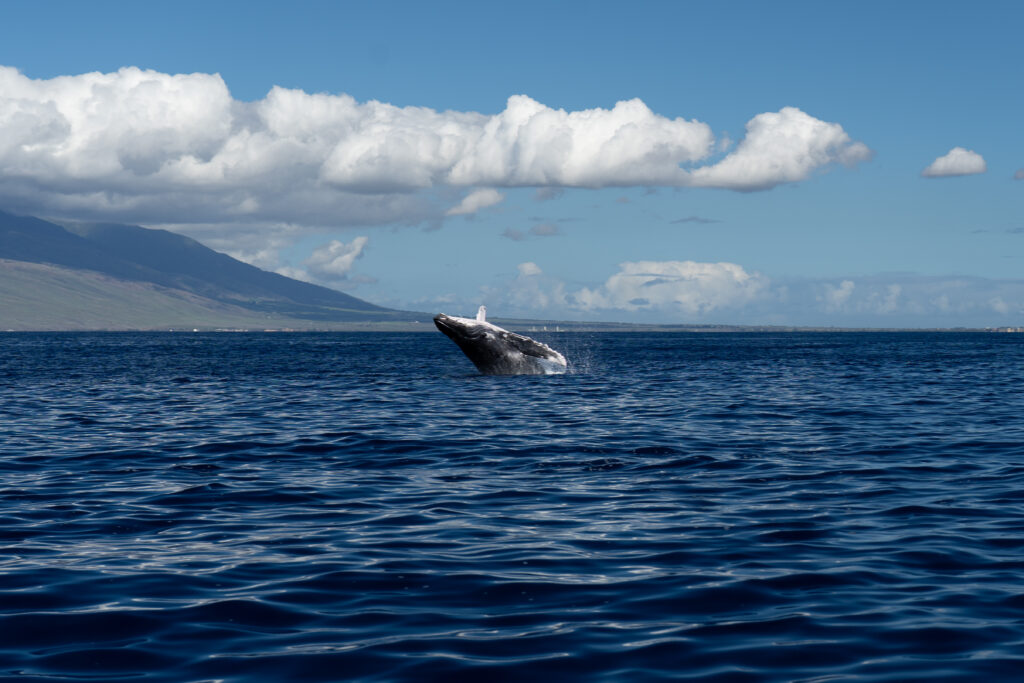
About the Hawaiian Islands Humpback Whale National Marine Sanctuary
Designated by Congress in 1992 and managed by NOAA (National Oceanic and Atmospheric Administration) in partnership with the State of Hawai‘i, this sanctuary was created to protect the once-endangered North Pacific humpback whale population. It’s one of only a few sanctuaries in the U.S. dedicated to a single marine species.
🏝️ Sanctuary Fast Facts:
- Covers coastal waters less than 600ft deep around Maui, Lana‘i, Moloka‘i, Kaho‘olawe, and parts of O‘ahu, Kaua‘i, and Hawai‘i Island.
- Maui’s Auʻau Channel is the most densely populated whale habitat in the sanctuary.
- Includes visitor centers, interpretive signage, and marine research programs.
- Offers volunteer opportunities and educational outreach programs.
Whether you’re hiking along the coast, paddling in a kayak, or joining a boat tour, you’re in the sanctuary—and part of a larger effort to protect these majestic animals.
🧠 Did You Know? In the early 1970s, fewer than 1,500 North Pacific humpbacks were estimated to exist. Thanks to conservation efforts like the sanctuary, today’s population exceeds 20,000.
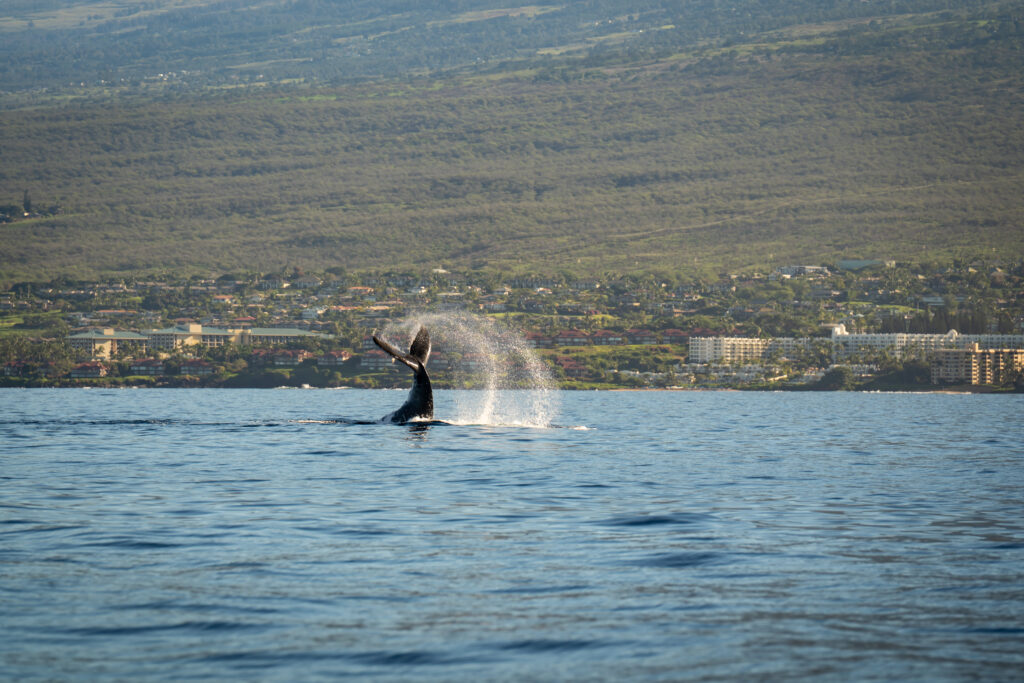
📍 Best Places to See Whales in Maui (Updated)
1. Hoʻokipa Beach Park
Not only can you spot whales offshore from this scenic north shore bluff, but you’ll often see honu (Hawaiian green sea turtles) basking on the beach below.
2. Papawai Point (Pali Lookout)
Just off the Honoapiʻilani Highway, this elevated view offers exceptional whale spotting over the Auʻau Channel, a core habitat in the sanctuary.
3. Kāʻanapali Beach
Popular with visitors, this beach is a hotspot for mother-calf pairs resting and playing in the nearshore waters.
4. Māʻalaea Harbor Area
Tour boats depart here and sanctuary signage offers info on humpback biology, marine laws, and how you can help protect whales. Visit the Maui Ocean Center Aquarium for their Humpback Whales of Hawai’i Exhibit & Sphere.
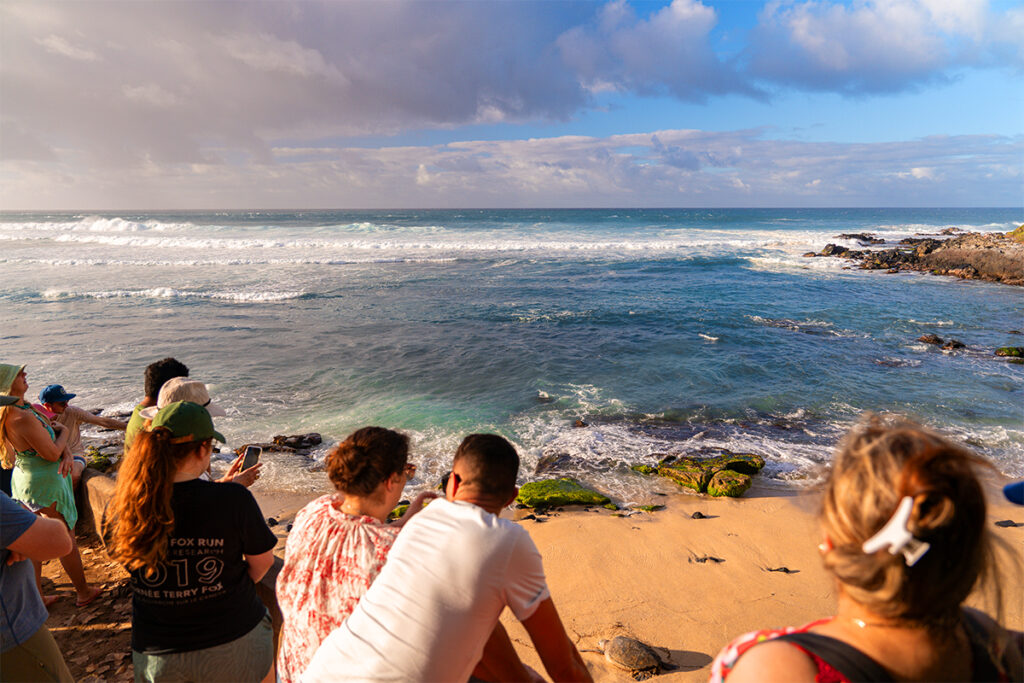
🌊 Be a Responsible Whale Watcher
- Stay 100 yards or more from whales (it’s the law).
- Don’t attempt to swim, paddle, or approach whales.
- Report any stranded or injured marine life to NOAA’s Marine Mammal Hotline: 1-888-256-9840.
- Support tour companies that employ certified marine naturalists and follow eco-friendly practices, such as Pacific Whale Foundation, Ultimate Whale Watch, and others.

🌴 Why It Matters
The whales aren’t just a seasonal spectacle—they’re part of a thriving ocean ecosystem and a living link to Hawaiian cultural identity. Thanks to the work of the Hawaiian Islands Humpback Whale National Marine Sanctuary and local conservation efforts, humpbacks have made a remarkable recovery.
By learning, observing respectfully, and supporting responsible tourism, you become part of that story.
Want to experience Maui’s nature from mountain peaks to the sanctuary seas?
Explore Hike Maui’s guided experiences for eco-conscious adventures that connect you to the land, sea, and stories of Hawaiʻi.

